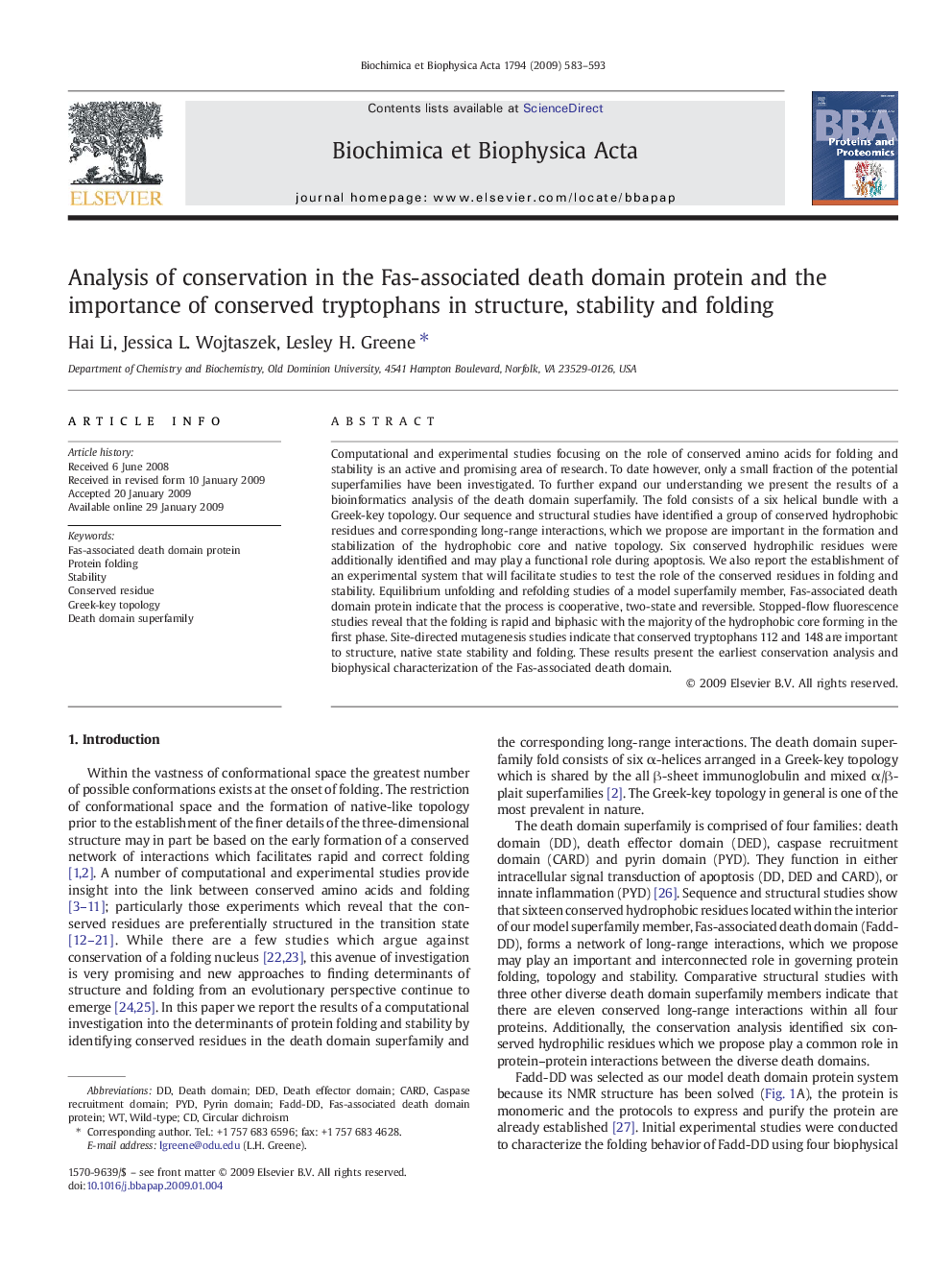| Article ID | Journal | Published Year | Pages | File Type |
|---|---|---|---|---|
| 1178072 | Biochimica et Biophysica Acta (BBA) - Proteins and Proteomics | 2009 | 11 Pages |
Computational and experimental studies focusing on the role of conserved amino acids for folding and stability is an active and promising area of research. To date however, only a small fraction of the potential superfamilies have been investigated. To further expand our understanding we present the results of a bioinformatics analysis of the death domain superfamily. The fold consists of a six helical bundle with a Greek-key topology. Our sequence and structural studies have identified a group of conserved hydrophobic residues and corresponding long-range interactions, which we propose are important in the formation and stabilization of the hydrophobic core and native topology. Six conserved hydrophilic residues were additionally identified and may play a functional role during apoptosis. We also report the establishment of an experimental system that will facilitate studies to test the role of the conserved residues in folding and stability. Equilibrium unfolding and refolding studies of a model superfamily member, Fas-associated death domain protein indicate that the process is cooperative, two-state and reversible. Stopped-flow fluorescence studies reveal that the folding is rapid and biphasic with the majority of the hydrophobic core forming in the first phase. Site-directed mutagenesis studies indicate that conserved tryptophans 112 and 148 are important to structure, native state stability and folding. These results present the earliest conservation analysis and biophysical characterization of the Fas-associated death domain.
